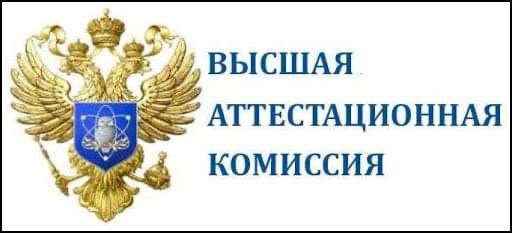СОВРЕМЕННЫЕ ДРЕЙФУЮЩИЕ РОБОТИЗИРОВАННЫЕ УСТРОЙСТВА ДЛЯ КОНТАКТНЫХ ИЗМЕРЕНИЙ ФИЗИЧЕСКИХ ХАРАКТЕРИСТИК АРКТИЧЕСКОГО БАССЕЙНА
Аннотация
Дается описание всех имеющихся автоматических измерительных устройств, которые сконструированы для выполнения контактных измерений характеристик льда и океана с дрейфующих ледяных полей в условиях низких температур. Все рассматриваемые устройства работают по заданным программам, передают результаты измерений в береговые центры в реальном масштабе времени, имеют GPS навигацию, не являются опытными образцами или действующими макетами, а изготавливаются поштучно или малыми сериями. Кроме того, все эти типы устройств уже производили успешные измерения в Арктике в течении года и более. Приводится описание устройств не только по сведениям из специальной литературы, но и на основе личного практического многолетнего опыта автора по работе с этой измерительной техникой в Арктическом бассейне.
Литература
- Андреев А.О., Дукальская М.В., Фролов С.В. Международный полярный год. История и перспективы. Под редакцией профессора И.Е. Фролова и канд. физ.-мат. наук В.И. Боярского. Санкт-Петербург: ААНИИ, 2007. 118 с.
- Папанин И.Д. Лед и пламень. М.: Политиздат, 1977. 416 с.
- Фролов И.Е., Гудкович З.М., Карклин В.П., Смоляницкий В.М. Шестидесятилетняя цикличность в изменениях климата полярных регионов // Материалы гляциологических исследований. 2008. Т. 105. С. 158–165.
- AHDR (Arctic Human Development Report). Akureyri: Stefansson Arctic Institute. 2004. P. 232.
- Polashenski C., Perovich D., Richter-Menge J., Elder B. Seasonal ice mass-balance buoys: adapting tools to the changing Arctic // Annals of Glaciology. 2011. Vol. 52(57). P. 18–26.
- Dickson B. The integrated Arctic Ocean Observing System (iAOOS): an AOSB-CliC Observing Plan for the International Polar Year. 2006. P. 16.
- Environmental Working Group joint U.S.-Russian Atlas of the Arctic Ocean - winter period. Edited by L. Timokhov and F. Tanis. Ann Arbor, MI: Environmental Research Institute of Michigan in association with the National Snow and Ice Data Center, 1997. CD-ROM.
- Fer I., Harms I., Martin T., Pisarev S., Rudels B., Schauer U., Sirevaag A. Water Masses and Circulation. The expedition ARCTIS XIX/1 a.b and XIX/2 of the Research Vessel ’Polarstern“ in 2003 // Reports on Polar and Marine Research,. 2004, Vol. 481, ISSN 1618- 3193. P. 72–92.
- IAOOS. Ice – Atmosphere - Arctic Ocean Observing System // http://iaoos.ent.upmc.fr/en/index.html (дата обращения 20.10.2019)
- Ice-Tethered Profiler // https://www.whoi.edu/website/itp (дата обращения 20.10.2019)
- JAMSTEC. Japan Agency for Marine-Earth Science and Technology // https://www.jamstec.go.jp/j/about/press_release/2006/20060613/1.pdf (дата обращения 18.10.2019).
- Kikuchi T., Inoue J., Langevin D. Argo-type profiling float observations under the Arctic multiyear ice. Deep-Sea Research. I. 2007. Vol. 54. P. 1675–1686.
- Krishfield R., Toole J., Proshutinsky A., Timmermans M.-L. Automated Ice-Tethered Profilers for seawater observations under pack ice in all seasons // Journal of Atmospheric and Oceanic Technology. 2008. Vol. 25. P. 2091–2095.
- Krishfield R., Doherty K., Frye D., Hammar T., Kemp J., Peters D., Proshutinsky A., Toole J. and von der Heydt K. Design and Operation of Automated Ice-Tethered Profilers for Real time Seawater Observations in the Polar Oceans. Woods Hole Oceanographic Institution. Technical Report 2006–11. 2006. P. 75.
- Kristoffersen Y., A. Tholfsen J. Hall K., Stein R. Scientists spend Arctic winter adrift on sea ice. 2016. Eos 97. https://doi.org/10.1029/2016EO060711 Published on 11 October 2016.
- MetOcean Systems // https://www.metocean.com/shop/metocean-systems/ (дата обращения 18.10.2019).
- MOSAiC. Multidisciplinary drifting Observatory for the Study of Arctic Climate // https://www.mosaic-expedition.org/ (дата обращения 18.10.2019).
- NPS Autonomous Ocean Flux Buoy Program // https://www.oc.nps.edu/~stanton/fluxbuoy/index html (дата обращения 18.10.2019).
- OPTIMISM. Observing processes impacting the sea ice mass balance from in situ mesurements // https://optimism.locean-ipsl.upmc.fr/tiki-index.php?page=Ice-T (дата обращения 18.10.2019).
- Benjamin R., Pisarev S., Shauer U., Wisotzki A., Rudels B., Kikuchi T., Mechier S. Oceanography. Expeditionprogramm Nr.78, FS Polarstern, ARK XXII/1a, XXII/1b, XXII/1c, XXII/2, 2007 // Alfred Wegener Institute of Polar and Marine Research, Bremerhaven, April, 2007. P. 80.
- Richter-Menge J.A., Perovich D.K., Elder B.C., Claffey K., Rigor I., Ortmeyer M. Ice mass-balance buoys: a tool for measuring and attributing changes in the thickness of the Arctic sea-ice cover // Annals of Glaciology. 2006. Vol. 44. P. 205–210. DOI:10.3189/172756406781811727
- SAMS. Research Services LTD. // https://www.srsl.com/services/autonomous-ice-measurement/ (дата обращения 18.10.2019).
- SCICEX. Submarine Arctic Science Program. // https://nsidc.org/scicex/ (дата обращения 18.10.2019).
- Shaw W.J., T.P. Stanton, M.G. McPhee. Estimates of surface roughness length in heterogeneous under‐ice boundary layers // J. Geophys. Res. 2008. Vol. 113. P. C08030. DOI:10.1029/2007JC004550.
- Stanton T.P., Shaw W.J., and Hutchings J. Variability of summertime ocean to‐ice heat flux in the Transpolar Drift: 2002–2007 // J. Geophys. Res. 2009.
Передача авторских прав происходит на основании лицензионного договора между Автором и Федеральным государственным бюджетным учреждением науки Институт океанологии им. П.П. Ширшова Российской академии наук (ИО РАН)













